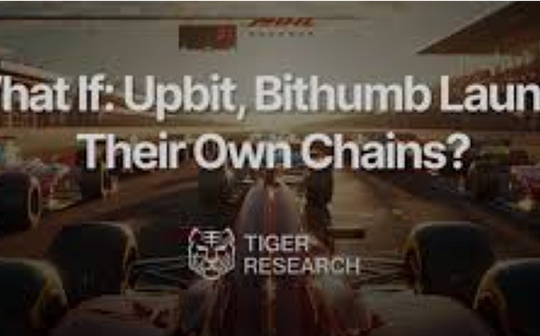
Author: Matthew Dawson, Token Economics Design of Outlier Ventures; Dimitrios Chatziagnoustou, Investment Director of Outlier Ventures; Jamie Burke, Founder and CEO of Outlier Ventures; Translated by: 0xxz@Bitchain Vision
Token Gravity concept
In the rapidly growing blockchain and cryptocurrency sector, a powerful new force is emerging: Token Gravity.Token Gravity was originally proposed by Outlier Ventures in 2017 and has become increasingly important as the blockchain space matures.It was originally a theoretical framework for understanding digital asset integration and can now be observed in how capital and community dynamics affect the growth of tokenized ecosystems.
“Token Gravity” describes the gravity exerted by large, well-capitalized tokens on small tokens, attracting them to a unified orbit.Just as planets attract objects to orbit, large tokens attract small tokens through their economic scale, which include liquidity, market presence, technological competitiveness, cultural and community engagement.As these tokens grow, their gravity will become stronger, affecting small projects to be aligned with or integrated with their ecosystems.
Token Gravity is driven by three main forces: capital – providing liquidity and stability; community – promoting network effects and brand loyalty; technology – achieving value creation and growth.While capital often plays a leading role, the synergy between community participation and technological innovation is the factor in maintaining gravity over the long term.This trend is unfolding in real time, as seen by the Alliance for Artificial Intelligence (ASI) merger in Outlier Ventures’ portfolio.In this case, multiple projects are unified in one token, leveraging shared liquidity and market influence to create a stronger, more integrated and dominant ecosystem.
Token supply wall
The cryptocurrency market is facing a serious challenge: an upcoming oversupply of tokens that could exceed existing demand.This influx is creating fierce competition for attention and capital competition between new and existing projects.With the threshold for issuing new tokens lower than ever, the market is experiencing a surge in token issuance.Thousands of new tokens, each with unique propositions, are competing for limited attention and capital in the market.In this crowded space, many projects are difficult to stand out, resulting in the increasing number of undercapitalized assets.
The surge in new tokens is causing Darwinian sparse in the market.Projects with weak capital reserves, poor liquidity and limited community support are facing increasing pressure to either stand out or face extinction.Only projects with strong collaboration, capital support, strong infrastructure and aligned with the larger ecosystem strategy can resist competitive power.
For new projects, survival depends on strategic choices.Many projects will seek to integrate with larger ecosystem players to leverage their liquidity and infrastructure to gain a foothold in the market.Others may focus on building a niche community and developing unique technological strengths to set themselves apart.In either case, dealing with this oversupply requires careful balance of short-term growth strategies and long-term sustainability.By understanding these dynamics, founders and investors can better position themselves in a market increasingly dominated by large players.Recognizing the challenges posed by this wall of token supply is the first step toward prosperity, in which partnerships and strategic alliances have become the key to success.
The rise of Category Tokens
As the cryptocurrency market matures, a new digital asset class is emerging: Category Tokens.These are large-cap tokens, the actual representatives of the entire industry, and the backbone of liquidity, community participation and technological innovation.Category tokens provide a cohesive framework for small projects, thus achieving a more organized and integrated market structure.
Category tokens provide a more efficient way to concentrate economic activity rather than hundreds of niche tokens for visibility and liquidity.They provide strong infrastructure, including deep liquidity pools, mature community bases and competitive technologies, making it easier for small projects to integrate into existing ecosystems rather than build from scratch.Improvements in blockchain technology have promoted easier interoperability, such as cross-chain compatibility, which is the driving force behind the growth of merger activity.
Category tokens act as hubs for network effects, and the value of the network increases as more projects are integrated.These network effects make smaller tokens increasingly difficult to compete independently, as alliances with category tokens enable them to leverage shared user base, liquidity and market influence.Over time, this integration will lead to a more efficient and connected market sector.While integrating smaller projects into category tokens can drive growth, it is not without its challenges.Coordinating governance models, ensuring that all participants receive equitable value, and maintaining technological compatibility can be complex.Additionally, some projects may resist integration to maintain their autonomy and token value upside potential, even if this means greater competitive pressure.Despite these challenges, category tokens are still attractive for those seeking faster access to liquidity and user networks.
Meme value, the ability to attract attention and mind, has increasingly become the driving factor in the success of tokens.In a market where differentiation is becoming increasingly difficult, “to some extent, everything is meme coins,” as Jamie Burke, founder of Outlier Ventures, put it.This means that tokens usually rely on their ability to generate hype and momentum, ideally fundamentals will support them, but often fundamentals will be missing.Tokens will also compete for attention among their kind, which is driven mainly by community participation and social awareness.In the absence of fundamental analysis, many investors will choose to invest in tokens not because of the intrinsic value of the token, but because they believe others will invest too.This situation of chicken or eggs once again puts category tokens at the forefront, because projects require investment to prove their value, which only occurs when the market is generally interested.Therefore, the speculative nature of the market amplifies the importance of meme value, and tokens must not only have strong fundamentals, but also successfully attract attention.
Token Gravity as a strategic moat: the role of capital, community and technology
Token Gravity creates a strategic moat in Web3, drawing projects into its tracks through a combination of capital strength, community engagement and technology integration.These elements combine to transform larger tokens into powerful hubs that shape the dynamics of the crypto ecosystem.
Capital is the cornerstone of Token Gravity, which enables tokens to ensure deep liquidity pools, attract institutional investors, and fund strategic partnerships or growth through mergers and acquisitions (M&A).This financial strength enables tokens to have a flywheel effect, i.e. greater liquidity and investment will attract more users and investors.
Culture is a force that maintains and amplifies the gravity of tokens.As Vitalik puts it, “Culture has similar effects to incentives – in fact, culture is part of the incentives. It affects who are attracted to the ecosystem and who are excluded”.An active and loyal user base is not only a source of network effects, but also a driving force for organic growth.These communities unite around tokens to create a sense of belonging that attracts new users and projects.For smaller projects, aligning with a strong community can be the difference between obscurity and accelerated adoption.
Technology is the backbone for seamless integration and enhancing interoperability within the token ecosystem.Tokens with a sound technical framework can make integration easier, but these technological advantages must be matched with capital to promote growth and community support to maintain user engagement.Projects often face trade-offs, and technically superior agreements can lose to well-funded, larger community-scale competitors, highlighting the need to take a balanced approach.
The real strength of Token Gravity is the synergy between capital, community and technology.When these elements are combined, they create a self-reinforced ecosystem that attracts new projects, fosters innovations and drives long-term growth.This dynamic allows smaller tokens to gain access to liquidity and infrastructure, while larger tokens consolidate their role as the backbone of the decentralized economy and shape the future of Web3 through strategic mergers and acquisitions.
Institutional transformation
As token integration reshapes the market, demand is shifting from retail-driven speculation to strategic long-term investments by institutions.Institutional capital flows into tokens with deep liquidity, strong governance and stability, qualities that make category tokens an ideal target.Institutional investors prioritize deep liquidity, a safe investment environment and consistent market depth, seeking assets that can accommodate large transactions without significant impact on prices.Unlike retail investors who are often attracted by speculative tokens, institutions focus on providing assets that provide long-term stability and growth potential, making category tokens their first choice.This shift forms a feedback loop: As institutional capital flows into class tokens, it deepens its liquidity and increases market value, thereby further enhancing its attractiveness.This growth has attracted more investment, cemented their dominance and expanded their presence throughout the market.
Category tokens have the potential to operate like index funds in traditional markets, providing an easy and effective way to distribute the industry.As the categories mature, the dominant tokens in these industries are increasingly representing their entire niche market, just like an ETF or index.For institutions, investing in category tokens can simplify the investment process.Instead of trying to pick a single winner in industries with higher liquidity and maturity risks, institutions can allocate capital to tokens that capture the entire category of economic activity.
Although many tokens are caught in the competition for meme value, we believe that certain categories will get rid of this dynamic because they have connections to real-world data components (i.e., DeAI, DePIN, and RWA).These categories are more closely linked to tangible, measurable data and use cases, which will increasingly attract the attention of retail and institutional investors.
Token Gravity Case Study: ASI Merger
As the world’s oldest, most active and consistent accelerator, Outlier Ventures has witnessed the dynamic development of token gravity first-hand.A notable example of OV’s portfolio is the ASI merger, where fetch.ai, SingularityNET, and Ocean Protocol merge into a unified token, giving ASI dominance in its category.This merger is just the beginning and ASI will continue its merger strategy and add CUDOS.
The merger with ASI illustrates the power of Token Gravity in the real world.By bringing together resources, capital and market influence, ASI is developing into a category token that draws smaller projects into its ecosystem and consolidates its leadership in the field.This trend is not limited to ASI.We have observed similar integration models in industries such as DeAI, DePIN and Real World Assets.As these areas mature, the gravity of well-capitalized tokens will continue to increase, driving further integration, integration and industry growth.
The future of token mergers
The future of the token economy is being affected by Token Gravity.As the market matures, some of the dominant tokens will continue to attract capital, projects and users, thus forming a more stable and interconnected ecosystem.This transformation brings opportunities for both established players and new entrants, but also requires strategic adaptation.
Capital liquidity is a major component of Token Gravity.Listing on major exchanges can be prohibitively expensive and take years to achieve, and this timeline will only extend as exchanges become more picky.This presents a significant obstacle for new entrants, even if they have excellent technology.No matter how innovative the project is, it will take quite a while to establish the necessary infrastructure, exchange listings, liquidity pools and partnerships.Institutional investors need deep liquidity and reliable infrastructure.With that in mind, new entrants face an uphill battle to gain a foothold in the market.They need time to build capital, community and liquidity to compete with larger, more mature categories of tokens.Therefore, the token gravity benefits existing businesses, who already have the necessary moats that allow them to continue to attract attention and capital over time.
For larger tokens, the focus should be on leveraging their gravity to drive growth and absorb innovation.At the same time, new projects must address complex environments by integrating into existing ecosystems or building unique value propositions and cultures that can develop independently.Understanding these dynamics is crucial for both founders and investors.Those who can combine their strategies with emerging integration models and adapt to changing markets will most likely thrive in the next stage of the decentralized economy.
In the upcoming article, we will dive into the practical aspects of Web3 M&A, examining the latest trends and strategies from the perspective of established players seeking to drive growth and new entrants aiming to open up space.







